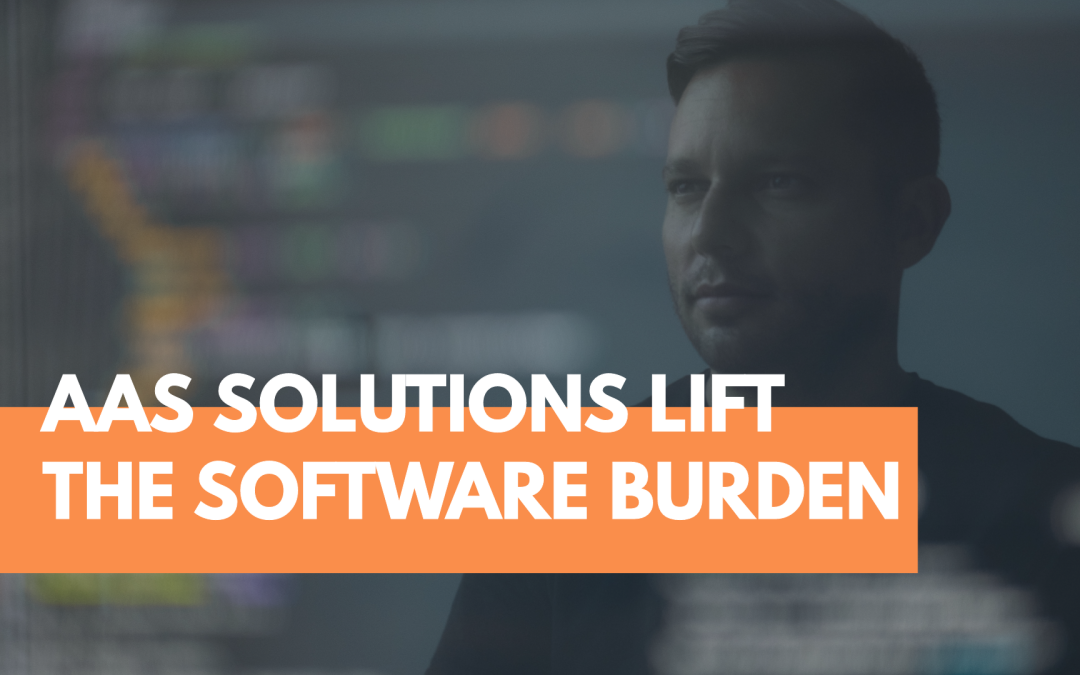Blog 3, final blog in the aaS Series
Traditional software security solutions were made for hand-to-hand combat. You’d buy one solution to fix one problem: security breaches, spam, data loss, malware infection. The problem is that they are expensive and don’t provide an agile security environment. They are tough to scale and produce single points of failure. And, they don’t adapt well to a fast-moving threat landscape, so their limited life cycles could leave you looking for a new solution far before you expected to.
See how aaS security solutions are replacing expensive on-prem software solutions, and creating the flexibility to give you a leaner, more agile security strategy.
The problem with traditional security software
In addition to being clunky and expensive, enterprise security software requires bandwidth and know-how: something even harder to come by in the midst of a cyber talent shortage. Many non-tech savvy companies may forego the experts altogether and just slap antivirus software on their network – to dismal results. On-prem solutions are also unable to secure the hosts of remote workers operating outside the traditional network. Even within the network, on-prem solutions often don’t have the agility of SaaS providers who can update state of the art security tools in their stack at a faster rate than most companies can buy and deploy them.
The fact that these traditional software solutions get older and more vulnerable is not lost on hackers. One study reported that companies using on-premise solutions experienced 61 attacks per year, while those using SaaS only 27.
How aaS solutions lift the software burden
SaaS solutions are built in response to the issues traditional software solutions create. They are cloud native, so they can take care of those remote workers outside of your network. They can make enterprise-grade security tools available on a pay-as-you-go model, so even smaller organizations can scale up and compete. They allow companies to try the latest security tools without investing in multi-million dollar licenses, and enjoy the benefits while relying on the provider to keep the tools updated. In a world where the threat landscape is evolving constantly, SaaS solutions can allow companies to stay nimble and respond to the latest attacks.
By operating outside of the brick-and-mortar software burden, SaaS solutions let companies grow without outstripping their security budget – or team. They offset the need to hire additional staff to deal with additional security incidents, as providers come equipped with their own team of security experts to learn and man the tools in use. This is particularly helpful to companies without a robust IT department (or money to staff one).
IaaS, PaaS and SaaS: What’s the difference?
XaaS, or anything-as-a-service, can be broken down into three main categories in security: IaaS, Paas, and SaaS. Let’s dive in and see what makes them different:
IaaS, or infrastructure as a service, provides infrastructure only. This is the back-end IT infrastructure used for running applications in the cloud.
● Without IaaS: You’d have to host the server, maintain the network equipment, hire specialists, and take care of self-owned infrastructure yourself.
● IaaS Benefits: Scalable security posture, as you only pay for resources consumed, and state-of-the-industry tech as cloud providers often compete to provide their customers with the best infrastructure.
PaaS, or platform as a service, provides infrastructure and software for application development (Oracle Cloud, Microsoft Azure, Docker).
● Without PaaS: If you want to build your own application, you need third-party software like databases, machine learning libraries, a platform and a place to host your applications.
● PaaS benefits: Start up quickly and get right to app development. If it’s cloud hosted, you can also take advantage of their collected data and analytics for use in your business decisions.
SaaS, or software as a service, provides clients with ready-for-use applications in the cloud.
● Without SaaS: Host and create your own applications – from Salesforce to Canva – and manage your own security, patches and updates.
● SaaS benefits: A turn-key solution. Vendor takes full responsibility for the maintenance of the application, managing server hardware and software, software security – everything. You just pay for the service.
Where Port53 comes in
Port53 is a fully managed SOC-as-a-Service provider, operating on the Cisco SecureX platform. Our cloud-based security services provide anywhere protection through an integrated system of secured APIs, and we provide enterprise-level SLAs with enterprise level tooling. In addition to providing per-IP priced penetration testing for custom scalability, our cloud risk assessment can sniff out apps lurking in your Shadow IT. In addition, our SaaS solutions provides:
● 24/7/364 threat detection and monitoring
● Enterprise level Security Operations Center (SOC) as a service
● Protection against online vulnerabilities
But, what sets us apart from other SaaS solutions is our standards-based approach. By partnering with Port53, you can know that your security posture will be compliant-by-design. We stack your current infrastructure against security standards for your industry (NIST, HIPAA, CMMC, PCI) and perform a maturity assessment. We see where you are in relation to those standards, and what you need to do to get there. As we help you develop your security strategy to close the gap, we provide you with the knowledge and enterprise-grade tools to do so.
Learn more about our XaaS offerings and get your Cisco Small Business Maturity Assessment.
Sources
1. O’Niell, Mark. “A Security Checklist for SaaS, PaaS and IaaS cloud models,” CSO Online, 31 January 2011, https://www.csoonline.com/article/2126885/saas-paas-and-iaas-a-security-checklist-for-cloud-models.html, accessed March 2022.


Recent Comments